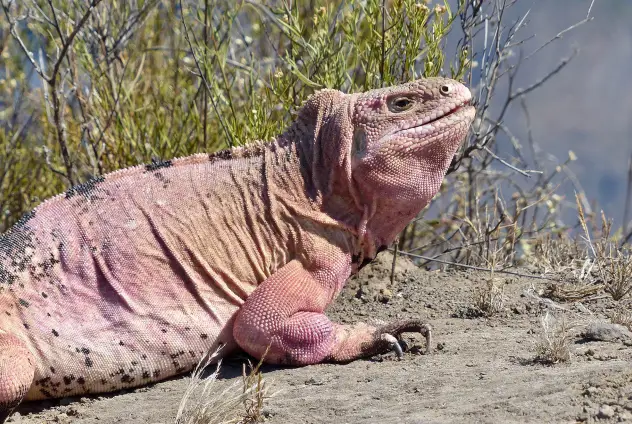Photograph of a mature male pink land iguana (Conolophus marthae) near the rim of the Wolf Volcano caldera. (Photo courtesy of Giuliano Colosimo).
Abstract
One of the rarest and most unusual iguanas on the planet is the Galápagos pink land iguana (Conolophus marthae). There have been a number of hypotheses on the source of their pink coloration, including that the colour is from blood and a relative lack of dermal pigmentation. We obtained full thickness skin biopsies of three species and compared tissue from darkly pigmented areas and lightly pigmented surfaces. “Pink” areas of pink iguanas are devoid of pigment cells (e.g. melanophores) and the dermal tissue is rich with aggregates of confluent capillaries. This was in sharp contrast to the minimally vascular (only capillaries were observed) dermal areas of the marine and yellow iguanas. The dermal stratum laxum of every biopsy site contained melanophores except for the pink skin of pink iguanas. Interestingly, marine iguanas have a much thicker epidermal stratum germinativum/granulosum, between 2 and 10 cells thick depending on location, compared to the thinner epidermal stratum germinativum/granulosum of land iguanas (one to three cells thick with most areas possessing just one or two cell layers). These microscopic differences might reflect differences in habitat and ecology of the three species.
Read the article in the link: https://onlinelibrary.wiley.com/doi/full/10.1111/azo.12488






